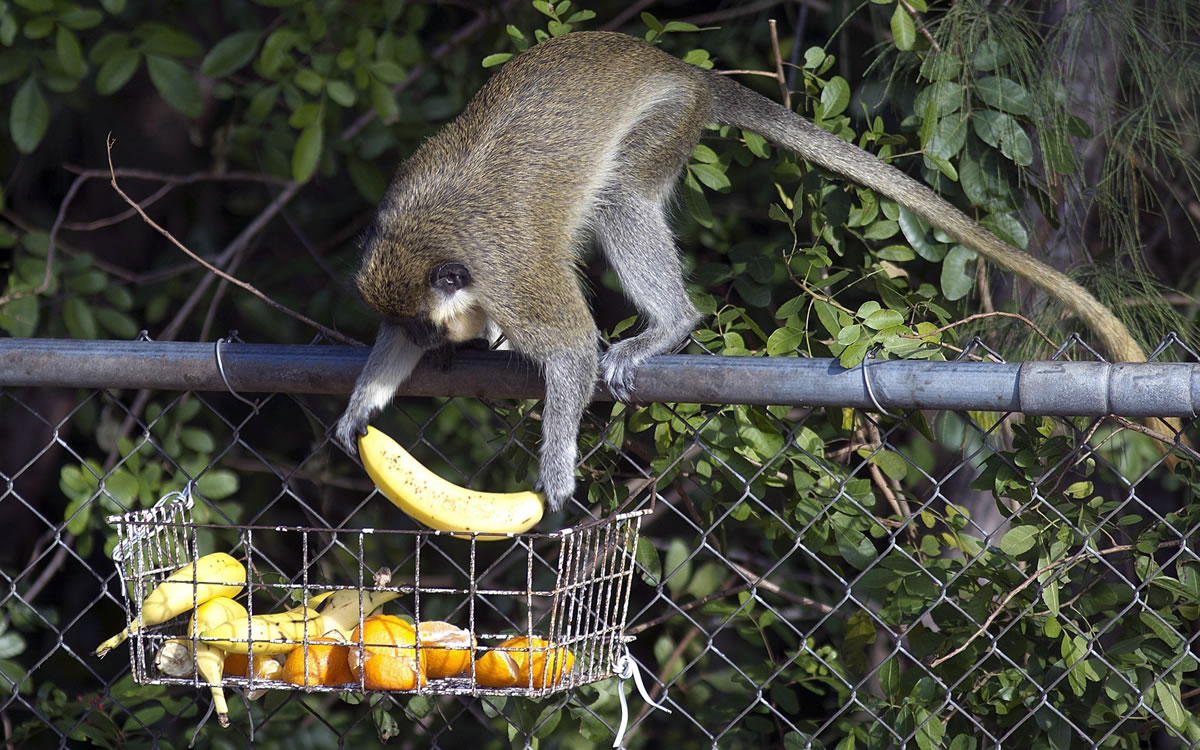DANIA BEACH, Fla. — On his way to work one spring morning 20 years ago, Laszlo Nemeth struck something on Dania Beach Boulevard.
It was a monkey, and it was dead.
As he went to move the carcass off the road, Nemeth suddenly was charged by five screeching monkeys that lunged from roadside bushes.
“They were so mad at me,” he said at the time. “They were kind of grinning and sticking their teeth out and jumping up high.”
Nemeth, terrified, retreated to his car and peeled off. He cast a quick glance in the rearview mirror.
“I could see them running after the car,” he said.
South Florida has long been known for monkey business, but few are aware that real, tree-swinging, howling simians were serious about making the region their home.
Nemeth’s frightening encounter in May 1993 put a national spotlight on Dania Beach and its typically reticent monkey population. There were efforts to oust the monkeys and rallies in their support. A documentary film was shot, and lawyers volunteered services on behalf of the beleaguered primates.
That year also set into motion a series of events that led to the monkeys’ eventual, though incomplete, demise. Like an ancient civilization that rose, thrived and declined, the monkeys, once numbering as many as 60, vanished into the jungle. Today, but a few descendants still haunt their old turf.
“You see them jumping from tree to tree, chattering and screaming,” said Mike Gabriel, an aircraft worker living at the Motel 6 on Dania Beach Boulevard, where monkeys caper about the chain-link fence that borders the rear parking lot. “They’re just like people — with tails.”
The origin of Dania Beach’s monkey colony dates to the 1950s, when monkeys were released from a tourist attraction and breeding facility.
They were vervet monkeys, native to eastern and southern Africa, and lived in the mangrove swamps along Dania Beach Boulevard. They also ventured into human territory, raiding mango trees and garbage cans — and coaxing handouts from people charmed by their clownlike antics.
Adult male vervet monkeys weigh as much as 18 pounds and grow as long as 24 inches, not including the long tail. They’re known for humanlike characteristics, such as hypertension and anxiety — as well as a tendency to drink when given the opportunity. Their alcohol consumption has been studied by scientists (about 12 percent of the monkeys are steady drinkers; 5 percent drink heavily).
Left alone except for some neighborhood fans, and the occasional researcher tromping in the swamp to observe them, the winsome creatures thrived, and they remained unremarked upon and unmolested for nearly 40 years.
Then came Nemeth’s accident. Experts said the monkeys that charged him were simply protecting their own. Yet news about the incident sparked national interest. Tourists bearing bananas and cameras descended upon the monkeys. But unlike neighborhood regulars, the tourists teased the vervets.
Owners of properties where the primates prowled, Bill Weiner and Louis Sands, feared legal liability should one bite a proffered hand. Weiner was owner of a mobile home park, Sands the owner of an adjacent 2 1/2-acre tract.
Though both were monkey lovers, Weiner and Sands hired a trapper to remove the colony. The trapper arrived in June 1993 and headed toward the woods bearing a blowgun and tranquilizer darts — until a phalanx of simian supporters rushed him and chased him away.
To this day, there have been no cases of any of the monkeys biting a human. But the Florida Fish and Wildlife Conservation Commission did note that the animals carry tuberculosis, herpes and hepatitis.
Back in 1993 lawyers, offered to represent for free any landowner who was sued over a monkey bite. They researched the law and determined that sufficient warning signs should preclude lawsuits. Weiner and Sands canceled the trapper and posted signs.
That fall, the Dania Beach City Commission passed a law making it a crime to feed the monkeys. Penalty: a $500 fine, 90 days in jail, or both.
The measure marked the beginning of the vervet empire’s decline. Deprived of human handouts, the monkeys melted deeper into the mangroves. Kids with pellet guns took a toll. Dissension within the colony’s ranks caused it to shrivel further.
The troop’s leader, “Old Joe,” an aging, dominant male with a lame leg, was unseated in 1993 by a younger male that formed a separate troop, causing a rift in the social structure.
In 1995, more misfortune befell the troop when a freelance trapper captured at least seven vervets, which, as nonnatives, have little official protection. He sold them for resale to zoos or breeders.
But monkeys still appear today in small groups. They’ve been spotted by airport construction workers and turn up for food some folks still leave out. Dania Beach City Attorney Tom Ansbro said the feeding ban won’t be enforced unless the monkeys become a problem.
The fish and wildlife commission knows about the remaining monkeys but, like the city, leaves them alone unless they exhibit aggression.
“They do whatever they want,” said Myra Vasquez, a clerk at the Motel 6. “They’re not hurting anybody.”



